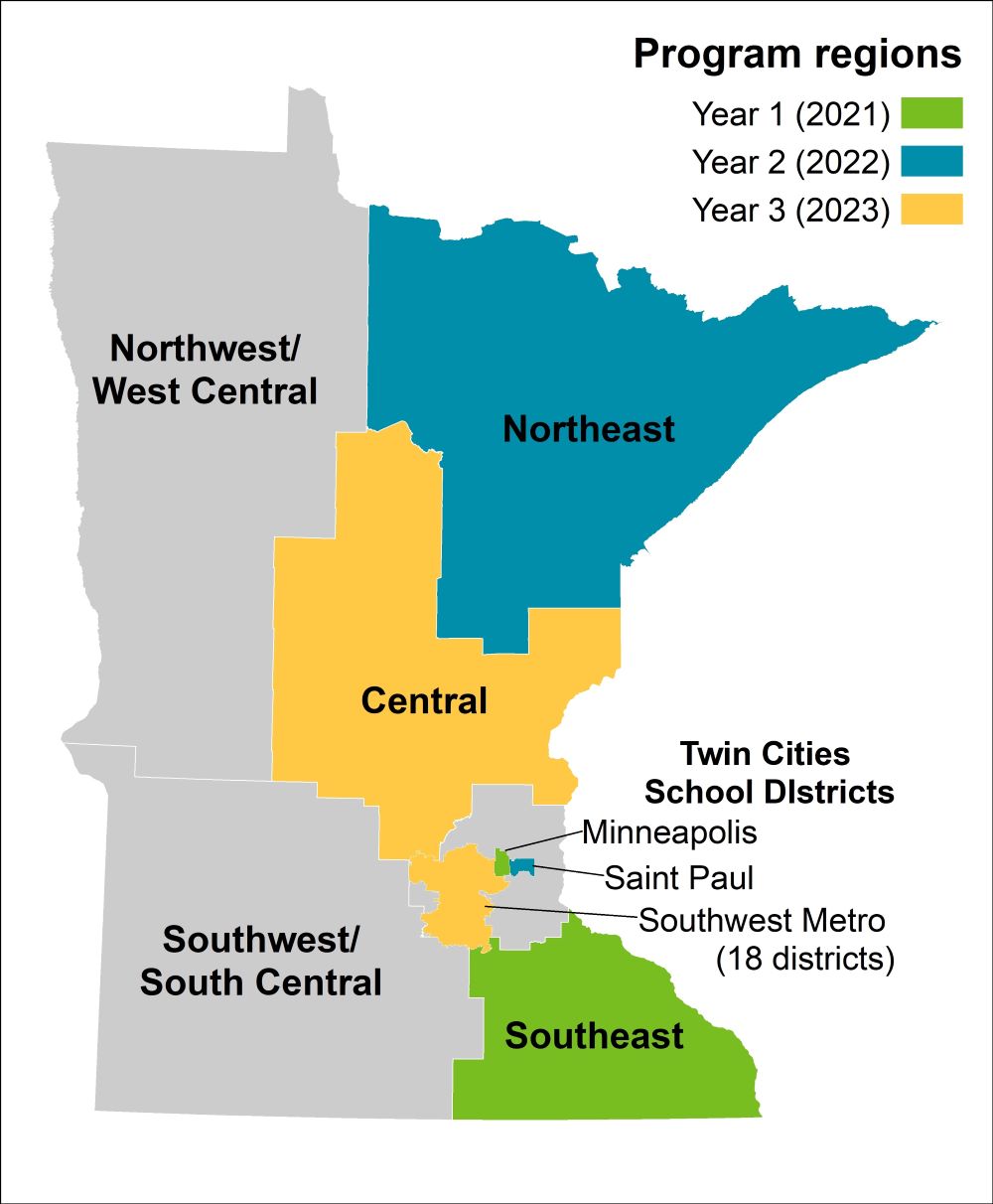2023 Public Health Laboratory Annual Report
Testing Minnesota Children for Harmful Chemicals
Biomonitoring can provide critical information to identify groups at risk for chemical exposure
 The Healthy Kids Minnesota program began with communities speaking out. Neighborhoods in North Minneapolis wanted to know how air pollution and other environmental problems were affecting their children. In rural North-Central Minnesota, citizens sought answers on the human effects of pesticides and the chemicals used in private well water.
The Healthy Kids Minnesota program began with communities speaking out. Neighborhoods in North Minneapolis wanted to know how air pollution and other environmental problems were affecting their children. In rural North-Central Minnesota, citizens sought answers on the human effects of pesticides and the chemicals used in private well water.
In 2018, a pilot program of biomonitoring - the testing of biological samples like blood or urine from people, or tissue from animals - in these areas yielded important results. In this case, children’s urine was collected and sent to the Environmental Laboratory and analyzed for more than 45 chemicals, including:
- Metals found in drinking water, air pollution, and some foods and products.
- Pesticides used in agriculture and to control pests in and around the home.
- Phthalates found in personal care products, toys, and some foods.
- Flame retardants found in household products like furniture and toys.
- Environmental phenols found in personal care products, toys, and some foods.
- Air pollution markers found in air pollution from industry and vehicles, smoking, eating some foods, and fires/smoke.
The children in rural areas, particularly kids living near agricultural fields, had higher levels of the pesticide 2,4-D in their urine than did kids from urban areas. Results also showed higher levels of chemicals from air pollution in the urine of children in Minneapolis, compared to both rural kids and the national average. See our Healthy Rural and Urban Kids section for more results from this study.
Healthy Kids rolls out across Minnesota
 The success of this project led to a five-year grant from the Centers for Disease Control and Prevention (CDC) to expand biomonitoring to more areas. This funded Healthy Kids Minnesota, a program for testing kids across Minnesota for dozens of potentially harmful chemicals.
The success of this project led to a five-year grant from the Centers for Disease Control and Prevention (CDC) to expand biomonitoring to more areas. This funded Healthy Kids Minnesota, a program for testing kids across Minnesota for dozens of potentially harmful chemicals.
Healthy Kids partners with local public health workers and public schools to collect urine samples from children aged 3 to 6 years. With parent/guardian consent, urine samples are collected from their children as part of the early childhood screening. After a sample has been analyzed, parents receive an explanation of the results.
Identifying natural and synthetic contaminants
The Environmental Laboratory uses its sophisticated instruments and skilled staff to test the samples for contaminants. Biomonitoring has long had the ability to test for well-established substances like mercury and arsenic. A greater challenge lies in developing new testing procedures for the synthetic chemicals found in a wide range of consumer products.
For example, environmental phenols like bisphenol A, parabens, and triclosan are present in sunscreen, toothpastes, and lotions. Having such chemicals in the body doesn’t necessarily lead to health effects. Scientists do not yet know what levels in the body are safe. The Healthy Kids Program adds valuable data to that research.
The chemicals being monitored by the Healthy Kids program do not stay in the body for long. They are flushed out the body regularly through urine, which is why urine samples are used for testing.
The five-year grant supporting Healthy Kids is set to expire soon. The health department is working diligently to keep the program going. By gathering information about what potentially harmful chemicals are prevalent and where, we can help protect Minnesota children from a future crisis. See our Healthy Kids section for more information.
Healthy Kids Minnesota measures urine levels for more than 60 chemicals in six categories
| Chemical Category | Children’s Health |
|---|---|
| Metals in drinking water, air pollution, and some foods and products. | Health effects of concern in children and developing babies include learning and behavior problems, allergic reactions, damage to the heart and kidneys, and cancer. |
| Pesticides in agriculture and to control pests in and around the home. | Exposure to some pesticides may harm the nervous system, interfere with the body’s natural hormone levels, or increase cancer risk. Infants and children are often more sensitive to the harmful effects of pesticides than adults. |
| Environmental phenols in personal care products, toys, and some foods. | Air pollution may cause heart and lung problems, and cancer. Effects on brain development are a growing concern. Air pollution may be more harmful for kids because their lungs and organs are developing. It may also trigger asthma attacks in kids with asthma. |
| Phthalates in personal care products, toys, and some foods. | Many phthalates are considered “endocrine-disrupting” chemicals. This means that they can affect the body’s natural hormones. Hormone changes can affect development in infants and children. Scientists are still learning what levels may be unsafe. |
| Flame retardants in household products like furniture and toys. | Scientists are still studying how these flame retardants affect people’s health. Some may interfere with the body’s natural hormones, which can affect development in infants and children. Some may harm the nervous system, reproductive system, or cause cancer. |
| Air pollution markers in air pollution from industry and vehicles, smoking, eating some foods, and fires/smoke. | Polycyclic aromatic hydrocarbons (PAHs) in air can irritate eyes and breathing passages and lead to asthma and other respiratory problems. They may be especially harmful for children, because their lungs and other organs are still developing. Some PAHs may cause cancer. |
Return to the main 2023 Annual Report page.